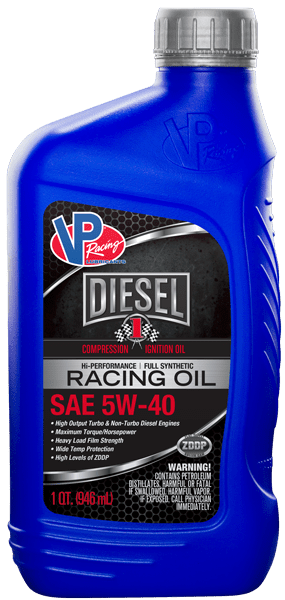High-performance engine oils are vital for racing due to their enhanced lubrication qualities. They withstand extreme temperatures and conditions typical in motorsports.
Racing engines demand the utmost from lubricants, making high-performance engine oils a crucial investment for any competitive racer. Designed for maximum efficiency, these specialized oils ensure engines run smoother, cooler, and more reliably under the high-stress conditions of the track.
With qualities tailored to reduce friction and wear, protective additives, and the ability to maintain viscosity at high temperatures, high-performance oils contribute to enhanced engine life and better overall performance. They form a critical component of any serious racing program, where every detail can make the difference between winning and losing. As enthusiasts constantly seek the edge over their competitors, selecting the right engine oil becomes an integral part of the performance equation.
Introduction To High-performance Racing Oils
Racing cars demand peak performance, and this starts with high-performance racing oils. These oils brace a car’s engine for extreme speed and pressure. Engine oils for racing are specially formulated to meet the high stress of the track. Let’s dive into what makes them so crucial for racing excellence.
The Role Of Engine Oil In Racing
Think of engine oil as the lifeblood of a race car’s engine. It must safeguard against wear while ensuring smooth operation at high speeds. Good racing oils reduce friction and carry away heat from engine hot spots. They also clean, preventing deposit build-up from high-speed runs.
How Racing Conditions Affect Lubrication
Racing engines work hard and hot.
- High RPMs increase temperature and pressure.
- Lubricants must resist breakdown despite these conditions.
- Quality racing oils contain additives for thermal stability.
Choosing the right oil optimizes performance and engine life.

Credit: vpracingfuels.com
Evolving Technology In Engine Lubricants
Over time, engine lubricants have transformed to meet the high-performance demands of racing vehicles. Today, technology plays a crucial role in developing oils that push the boundaries of speed and efficiency. In this dynamic landscape, two areas stand out: synthetic oil blends and nanotechnology.
Advancements In Synthetic Oil Blends
The latest generation of synthetic oils goes beyond conventional blends. These advanced formulas offer unmatched engine protection and performance. Racing engines benefit from the following improvements:
- Reduced friction – Minimal resistance means maximum speed.
- Enhanced thermal stability – Keeps your engine cool under pressure.
- Optimized engine cleanliness – Less build-up, more smooth drives.
Nanotechnology In Oil Additives
Nano additives represent a game-changing approach in engine lubrication. Here’s how they elevate engine oil performance:
| Nano Additive Benefits | Impact on Engine Performance |
|---|---|
| Increased Wear Resistance | Longer engine life even in extreme conditions. |
| Improved Fuel Efficiency | Less energy loss translates to more power. |
| Better Oil Flow | Smooth circulation even at low temperatures. |
With every race, teams and drivers press on toward the next breakthrough in lubricant technology. These advancements keep engines running faster and longer, setting new standards for automotive excellence.
Characteristics Of Racing Engine Oils
Racing engines are marvels of engineering. They push out immense power under the hood. But they can only maintain peak performance with the right oil. Racing engine oils are special. They ensure engines run smooth and fast. Let’s dive into the properties that make these oils the ideal choice for the high-stakes world of racing.
Viscosity Requirements For High Speeds
Viscosity is how we measure an oil’s thickness. In a race, engines rev fast. So, the oil must be just right. Not too thin, not too thick. High speeds need oils that stick to engine parts well. This reduces wear. At the same time, the oil must flow easily. This keeps the engine parts cool.
- Low Viscosity: Offers quicker flow at start-up
- High Viscosity: Provides a strong film at high temperatures
This balance is key. Racing oils have high viscosity indices. This means they stay more consistent across temperatures. This consistency helps engines run fast and last long.
Thermal Stability Under Extreme Heat
Thermal stability is all about an oil’s behavior under heat. Race engines get very hot, very fast. Standard oils might break down or evaporate. That’s bad. Racing engine oils can take the heat. They stay stable even at extreme temperatures.
| Quality | Benefit |
|---|---|
| Resistance to Oxidation | Less sludge and deposit buildup |
| High Boiling Point | Oil stays inside the engine |
Improved thermal stability means better engine protection. It also extends the oil’s life. Strong film strength helps protect against friction. This means engines can go harder, for longer.
Read More: Engine Oil for Hot Weather
The Chemistry Behind Performance Oils
Racing engines demand more from their oil than regular engines. High-performance oils exist to meet that demand. They protect engines, even in extreme conditions. This section dives into the critical chemistry that gives these oils their edge.
Key Additives That Enhance Performance
Different ingredients mix to make performance oils superior. These key additives serve various functions:
- Viscosity modifiers: Help oil maintain optimal thickness across temperatures.
- Detergents: Keep the engine clean from deposits.
- Dispersants: Prevent contaminants from clumping.
- Friction modifiers: Reduce friction for better efficiency.
- Antioxidants: Stop oil breakdown at high temperatures.
- Corrosion inhibitors: Protect metal parts from rust.
Each additive plays a part in enhancing the oil’s performance, ensuring engines run smoother and last longer.
The Impact Of Zddp On Engine Wear
Zinc dialkyldithiophosphate, or ZDDP, is a crucial component in performance oils. ZDDP acts as both an antioxidant and an anti-wear agent. It’s known for:
- Reducing wear: Creates a protective layer on metal surfaces.
- Extending engine life: Protection means less maintenance.
- Enhancing performance: Smooth surfaces mean less friction.
ZDDP has been a reliable ally for racing engines, constantly improving oil formulas to reduce wear and tear.
Comparing Racing Oils to Conventional Oils
In the world of high-speed racing, the role of engine oil is crucial for maximum performance. Contrary to the oils used in everyday vehicles, racing oils are designed for the extreme conditions of the track. Let’s dive into how racing oils differ from their conventional counterparts and why the standard options are not up to the mark for racing applications.
Structural Differences and Their Effects
Racing oils and conventional oils are engineered with different goals in mind. The key distinctions between them lie in their formulation and structural integrity.
- Viscosity: Racing oils often have a higher viscosity index to withstand high temperatures.
- Additives: Performance-focused additives are prevalent in racing oils, offering better protection under extreme stress.
- Volatility: Racing oils have lower volatility to reduce oil breakdown and maintain consistency.
| Feature | Conventional Oil | Racing Oil |
|---|---|---|
| Viscosity Stability | Good | Excellent |
| Thermal Degradation | Higher | Lower |
| Wear Protection | Standard | Enhanced |
Racing oils are synthetically made to endure the punishing environment of race engines. They maintain performance over a broad temperature range. On the other hand, conventional oils could break down faster under racing conditions.
Why Standard Oils Fall Short In Racing
Performance and reliability are non-negotiable in racing. Here’s why typical oils don’t make the cut:
- Heat Resistance: Standard oils cannot handle the extreme heat generated by racing engines.
- Shear Stability: High RPMs in races can shear conventional oils, causing them to lose viscosity.
- Deposit Control: Racing engines require oils with superior cleaning agents to prevent deposit buildup.
Racing engines operate under conditions that would quickly degrade standard motor oils. Because of this, racing oils are essential for the durability and peak performance of racing vehicles.

Credit: hi-tecoils.com.au
Case Studies: Racing Oils In Action
Pushing the limits on the racetrack, high-performance engines demand the best in lubrication. Racers across the globe turn to top-tier racing oils for that competitive edge. This deep-dive showcases how advanced racing oils perform under the grueling conditions of professional motorsports.
Performance Metrics In Professional Racing
Professionals measure engine oil performance in several key areas. These include temperature stability, wear protection, and horsepower retention.
- Temperature resistance keeps oils effective in extreme heat.
- Wear protection ensures vital engine components last longer.
- Horsepower is maintained through efficient lubrication.
Racing teams base their oil choices on these metrics to maximize results.
Real-world Results From Racing Teams
Racing oil case studies reveal the real-world impact of high-performance lubricants. Take for example, a renowned Formula One team. Their switch to a specialized racing oil resulted in:
| Metric | Before | After |
|---|---|---|
| Engine Temperature | High | Optimized |
| Component Wear | Noticeable | Minimized |
| Horsepower | Reduced over races | Consistent performance |
An off-road rally team also reported dramatically reduced engine rebuilds post-switch. They cited the oil’s robust formulation as the key factor.
Direct input from pit crews and drivers affirms the significance of racing oils in their success. Teams attribute their victories to the choice of the right engine oil.
Selecting The Right Oil For Your Race Engine
Imagine your race engine as a heart, pulsing with power. Just like your heart needs the right diet to perform, your engine demands the right oil. Without it, performance dips, and reliability suffers. It’s not simply about the slippery stuff; it’s about giving your engine the lifeblood it craves for peak performance. Let’s explore how to select the ultimate elixir for your race engine.
Understanding The Specifications and Ratings
Familiarizing yourself with oil standards is crucial. Think of these as a rulebook for engine protection. Here’s what to keep an eye on:
- Viscosity ratings, like 0W-20 or 10W-60, tell us about oil flow at different temperatures.
- API classifications such as SN, SM, or SL outline performance levels and engine protection ability.
- ACEA standards offer a European perspective on oil quality with categories like A1/B1 and C3.
Analyze race-specific formulations that can handle extreme stresses. Labels like ‘Racing Formula’ or ‘High-Performance’ serve as a beacon.
Matching Oil to Engine Type and Race Conditions
Every engine tells a unique story. Selecting the perfect oil blends science with a touch of art. Consider these factors:
| Engine Type | Race Conditions | Oil Recommendation |
|---|---|---|
| Turbocharged | High Heat | Synthetics with higher viscosity |
| Naturally Aspirated | Mixed | Multi-grade oils suited to ambient temperatures |
| Rotary Engines | Extended Durations | Formula with enhanced film strength |
Adjust for track temperature and race duration. Short sprints may tolerate lighter oils. Endurance races demand oils that resist breakdown over time.
Maintaining Engine Health With Proper Lubrication
Maintaining Engine Health with Proper Lubrication is crucial for race cars. High-performance engines need high-grade oils. These special oils withstand extreme conditions. They make sure engines run smoothly. Good oil protects against wear and tear. Always choose the right oil for your race car. This keeps your engine healthy for longer.
Oil Change Intervals for Race Cars
Race cars have unique needs. They work harder than regular cars. This means they need more frequent oil changes. Factors to consider:
- Engine type and size
- Type of racing (drag, circuit, endurance)
- Track conditions (dirt, asphalt, weather)
Follow these points for the best timing:
| Car Type | Change Interval |
|---|---|
| Drag Racing | After every race |
| Circuit Racing | Every 500 miles |
| Endurance Racing | Every 1000 miles |
Read More: Engine oil for extended oil change intervals.
Monitoring Oil Condition and Performance
Keep an eye on the oil. Look for changes in color, texture, or debris. Signs of bad oil:
- Dark or dirty oil
- Thin or thick texture
- Particles or grit
Use oil analysis tools for the best results. This will show:
- Wear metal levels
- Oil viscosity
- Contamination
Regular checks keep your engine at peak performance. Always replace the oil if you find any issues.
Legislation And Environmental Concerns
The race towards peak performance in motorsports often overlooks the pit-stop of environmental responsibility. With high-revving engines, the demand for oils that can endure extreme conditions has never been greater. As stewards of the earth, however, the racing community faces growing pressure to consider the environmental impact of their pursuits. Legislation and green innovation are steering the race in a fresh, eco-conscious direction.
Regulatory Standards Impacting Racing Oils
Recent shifts in global attitudes towards the environment have led to stricter regulations. These new rules directly affect racing oils and their formulations. With legislation in place, manufacturers must adapt to continue to support the racing industry responsibly:
- Emission limits — Tighter controls on exhaust emissions push for oils that help reduce pollutants.
- Volatile organic compound (VOC) restrictions — Limits on VOCs shape the development of less-evaporative lubricants.
- Biodegradability requirements — Oils now need to break down effectively to minimize environmental damage.
Eco-friendly Innovations In Racing Lubricants
Progressive strides in creating environmentally-friendly racing lubricants are accelerating. The industry presents innovations balancing speed with ecology:
- Synthetic bio-based oils — Derived from plants, these oils offer a sustainable high-performance alternative.
- Nanotechnology — Tiny particles provide superior protection while reducing the environmental footprint.
- Re-refined base oils — Improved recycling methods turn used oil into high-quality lubricants.
Future Trends In Racing Lubrication Technology
The landscape of high-performance racing oils is evolving at a breakneck pace. Engineered to withstand the rigorous demands of high-speed motorsports, these lubricants are on the verge of a technological revolution. With advancements aimed at maximizing efficiency and durability, the future of racing lubrication beckons with exciting prospects, defining the performance of next-gen racing machines.
Emerging Technologies and Their Potential
Races test the limits of machine performance. Emerging technologies in the lubrication sector focus on pushing these boundaries even further. Here are key innovations:
- Nano-lubricants: Tiny particles create a strong protective layer.
- Bio-based oils: They offer an eco-friendly edge without sacrificing performance.
- Smart additives: These adjust properties in response to engine stress.
Each innovation brings us closer to engines that last longer and perform better. They promise a future where racing machines not only go faster but also leave a smaller environmental footprint.
The Role of Racing Oils in Next-gen Motorsports
Racing oils are not just lubricants; they are critical performance components. They ensure that engines can consistently perform at peak levels. For next-gen motorsports, racing oils will:
- Reduce engine wear at extreme speeds.
- Improved fuel economy is crucial for endurance races.
- Adapt to advanced engine designs and hybrid technologies.
Through these roles, racing oils will be a cornerstone in the success of modern motorsports. They will cater to increasingly sophisticated and eco-friendly racing machines, ensuring that the sport we love keeps pace with innovation and sustainability.

Credit: drivenracingoil.com
Frequently Asked Questions
What Oil Is Better For Racing?
Synthetic oil is generally better for racing due to its high temperature resistance and superior engine protection properties. It helps maintain performance under extreme conditions.
What Oil Do Nascar Engines Use?
NASCAR engines typically use a full synthetic motor oil, specifically designed for high-performance racing conditions. Brands vary by team and sponsorship agreements.
What Oil Increases Horsepower?
High-quality synthetic oils can help increase horsepower slightly by reducing engine friction and ensuring efficient operation.
Which Engine Oil Is Best For Performance?
The best engine oil for performance is typically a fully synthetic oil with the correct viscosity for your vehicle, as recommended by the manufacturer.
Conclusion
To wrap up, selecting the right high-performance engine oil is critical for any racing enthusiast. Quality oils protect engines under extreme conditions, ensuring peak performance. Always consider viscosity and additives before hitting the track. Remember, your choice can make the difference between victory and defeat.
Drive safe, and may the best oil lead you to the finish line.

